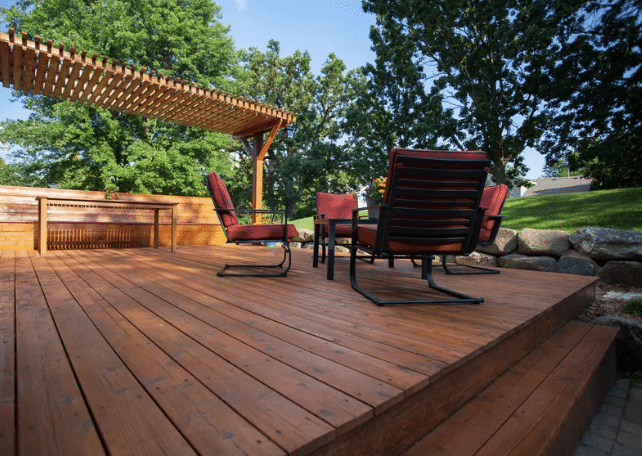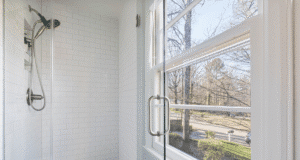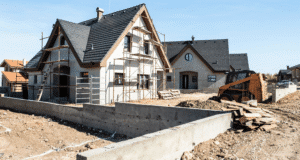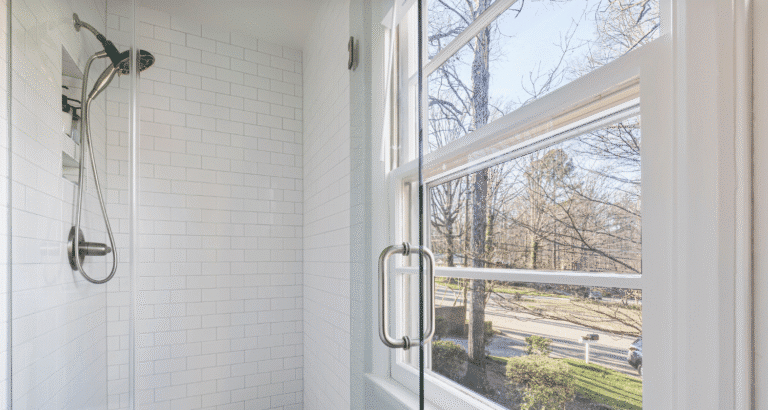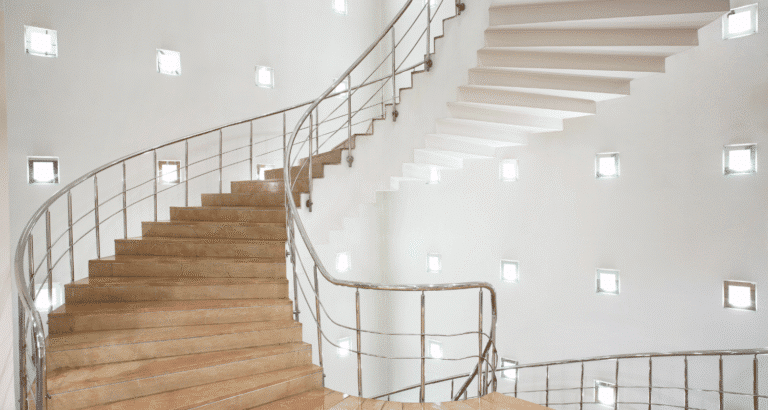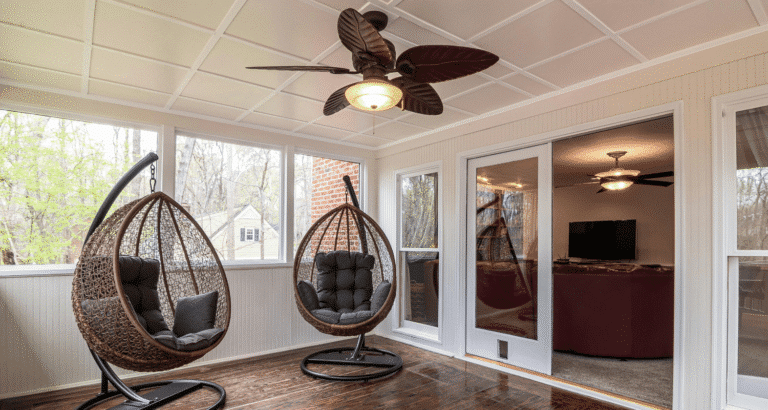If you’ve ever scowled at your concrete porch and thought about what you could have done with it as a place to relax and enjoy the outdoors, you’re not alone. Many homeowners share this everyday struggle: wanting to create an inviting and functional outdoor space but wondering how on earth to make it work with an established If you’ve ever scowled at your concrete porch and thought about what you could have done with it as a place to relax and enjoy the outdoors, you’re not alone. Many homeowners share this everyday struggle: wanting to create an inviting and functional outdoor space but wondering how on earth to make it work with an established concrete foundation. Deck installation over a concrete patio can provide a new surface for seating or entertaining.
Whether you’re looking for a long-term option for your comfortable morning cuppa or planning a larger-scale outdoor extravaganza on your lawn, it does not have to mean ripping everything out just to have a deck on concrete. Here are the things you’ll need and tips to help you on your way to building a deck over a concrete porch. Ideas for DIYers and contractors alike. Ready to get started? Let’s read the blog and get some amazing ideas on how to build a deck over a concrete porch.
Why Build A Deck Over A Concrete Porch?
Before you start, it’s crucial to understand the many advantages of putting a deck around your concrete porch. Concrete can be cold, plain, and hard to care for. Alternatively, a deck can offer comfort, aesthetic appeal, and additional space for your family and guests. Here are the reasons you might want to install a deck over the top of your concrete porch:
- Improved Aesthetics: An expertly constructed deck brings warmth, character, and texture to the exterior of your home, a look that no cold, hard slab of concrete can touch!
- Better Drainage: Unlike concrete, which can gather water and leave a stain or damage, wood provides natural air flow underneath it!
- Added Comfort: Unlike concrete, a deck installation provides a comfortable walking surface and more inviting outdoor space with wood or composite decking.
- Improved Home Value: By building a deck, you are effectively adding additional usable square footage to your home, which can be a central selling point if you move.
Step 1: Plan Your Deck Design and Materials
How a DIY deck construction can be done on a concrete porch. The most efficient way to build a resilient deck over a concrete surface is. You seek a plan that integrates well with your area and is safe and sturdy when built.
Deck Design Considerations:
- Size and Arrangement: Think about the ground you want to cover. Are you trying to add an extension to your porch or just a little platform?
- Access Points: Consider coming and going on your deck. Ensure there is enough clearance around any doors or stairs.
- Deck Material: You don’t just have one or two choices here. For a natural look and feel, wooden decking is a classic option. However, composite deck ideas are gaining popularity thanks to their low maintenance and greater resistance to decay. Composites are available in several finishes, resembling wood without the maintenance.
Composite decking is long-lasting and durable. It is also fade, stain, and mold resistant, so you will spend less time maintaining your deck.
Step 2: Tools And Materials Needed
It’s time to collect your materials now that your design is done. This is an essential step to help the deck-building process flow. You’ll want everything prepared before you start, so there’s no lag or break in the action. Some of the tools and materials you will need:
- Measuring tape
- Circular saw
- Power drill and screws
- Level
- Concrete anchors (if mounting into concrete)
- Joists and decking boards
Basic materials you will need for building a deck, and some specialized items based on the type of deck you build. Deck Sleeper System Substructure Sleeper systems go over any patio or stairs, even a cracked concrete patio or old deck. The bottom of the deck, or closed-to-ground decks, is often provided with air flow by adding vent fans.
Step 3: Attending To The Concrete Porch Surface
Before starting, you must clean and level the concrete surface. You’re already on top of anything with garbage, dirt, or cracks. Power wash or sweep the surface clean. If you have any cracks in the concrete, it’s crucial to fill them with an appropriate concrete filler so you have a flat surface. You can add a vapor barrier to prevent dampness from leaching through the concrete and ruining your deck as the years wear on.
Step 4: Install The Decking Supports
One of the most important things to consider when building over concrete is ensuring that your deck has plenty of support. The simplest method is to use decking pedestals or deck supports. These adjustable legs go straight onto the concrete to form a deck base and support the Bearers. With the deck raised a little, the air can circulate and drain away more easily. Ensure supports are spaced adequately for your decking design. If you have traditional wood joists, they need to be no more than 16 inches apart, or the floor won’t be stable. Adjustable pedestals let you height and level the deck, which may be helpful if your concrete porch is not flat.
Step 5: Attach the Deck Frame
After your supports are all up, it’s time to slap on the deck’s frame. Screw the frame into position with a power drill, and then, making sure it’s straight and level, install the trim. If you’re using wood joists, be sure to anchor them securely into the concrete with suitable concrete anchors or masonry screws. If you are working with composite decking, follow the manufacturer’s directions for securing the boards and the frame together.
Step 6: Install Decking Boards
Once your frame is in place, you are ready to lay the decking boards. Beginning at one end, and until you reach the other side of the deck, fasten each board to the frame with screws. Be sure to leave a few mm between each board to give it room to expand and the water somewhere to go. If you use composite decking, leave the spacing the manufacturer recommends to prevent water buildup or warping.
Step 7: Open and Accessorise the Deck
After building a deck platform, boards are secured, and any accessories or finishing touches are set to complete the deck. You will probably want to include a rail system for security, especially if your deck is more than a few feet off the ground. You might also install lighting to extend its use into evening, and some outdoor furniture, plants, or a pergola to make it more welcoming and attractive. The deck should be coated with a non-slip surface (given that the deck becomes wet), specially made for this reason. This will prevent accidents and preserve the life of your deck.

Final Thoughts
Constructing a deck over the concrete porch is not tricky. With just a few easy steps, you can make your outdoor space enjoyable for your family and friends. Whether you do the work yourself or hire a deck builder, a deck adds value and enjoyment.
Need help getting started? At Builders Group Construction, we’re all about providing the best outdoor deck solutions for you and your budget. Contact us today for professional assistance or to schedule a free consultation!
FAQs
Can you put decking over a concrete porch?
Decking can be installed over a concrete porch with a sleeper system to create a porch overhang. This allows room for drainage and ventilation, which assists in avoiding moisture damage. A good preparation, such as clean and level concrete, is paramount to a successful installation.
Can I lay decking straight onto concrete?
Decking can be installed directly onto concrete, and while most people wouldn’t think it’s the best foundation for a structure, it’s there for a lifetime. Without proper venting and drainage, moisture accumulation can result in wood rot. Installing on a sleeper system or deck frame is useful in elevating the decking above the concrete to achieve proper air flow and circulation underneath the decking to prevent moisture entrapment.
Can a deck overlay be used on concrete?
DeckOver works on wood and concrete and resurfaces your deck with a textured finish. It has the advantage of covering up imperfections and creating a non-skid surface. That works well for recasting old concrete, but the painted surface must be prepared so the new material won’t flake away.
What is the cheapest way to cover a concrete patio?
Some of the least expensive ways to cover a concrete patio are to concentrate on the furniture. Some of the least costly options for covering a concrete patio include using outdoor rugs, carpeting, or paint. Otherwise, peel-and-stick tiles or deck tiles can be a low-cost alternative. These choices add to the patio’s appearance, without the cost of a complete remodel.

